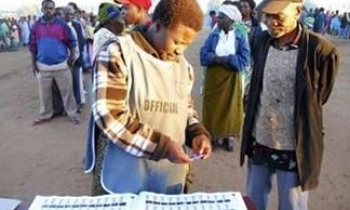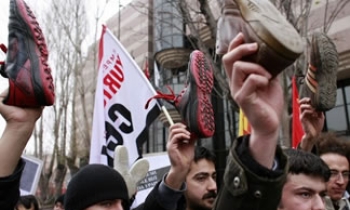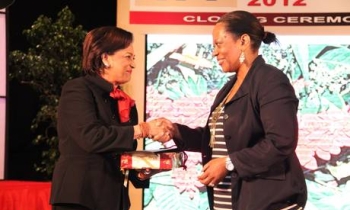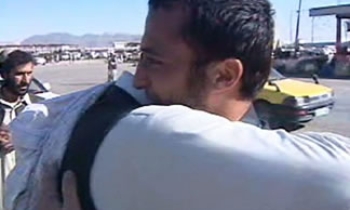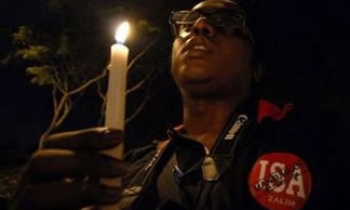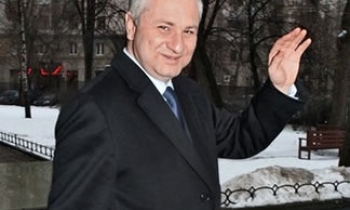Jack N. Anderson, 83, a Pulitzer Prize-winning investigative reporter who for years was America's most widely read newspaper columnist, died Dec. 17 at his Bethesda home. He had Parkinson's disease.
A crusader in the mold of muckrakers from a century ago, unbounded by contemporary notions of objectivity, Mr. Anderson was highly successful during the 1950s and 1960s, when few reporters actively sought to uncover government wrongdoing. At one point, his column appeared in about 1,000 newspapers with 45 million daily readers.
His influence flagged in recent years, but for decades he had the investigative field virtually to himself. The number of scoops that he had a hand in was amazing: the Keating Five congressional ethics scandal; revelations in the Iran-Contra scandal; the U.S. government's tilt away from India toward Pakistan, for which he received the Pulitzer Prize in 1972; the ITT-Dita Beard affair, which linked the settlement of a federal antitrust suit against International Telephone & Telegraph to a $400,000 pledge to underwrite the 1972 Republican National Convention; the CIA-Mafia plot to kill Fidel Castro; the final days of Howard Hughes; U.S. attempts to undermine the government of Chilean president Salvador Allende; allegations about a possible Bulgarian connection to the shooting of the pope; an Iranian connection to the bombing of the U.S. Embassy in Beirut.
"He had such huge strengths and huge weaknesses," said Mark Feldstein, director of the journalism program at George Washington University, who is writing Mr. Anderson's biography. "He practiced journalism like a blue-collar craftsman with a populist point of view. He was practicing a crusading craft rather than a profession, and [investigative reporting] has lost some of its juice, its verve, its gusto, in trying to be objective. Anderson didn't try to hide his politics or his agenda."
Mr. Anderson and Drew Pearson, his predecessor on "The Washington Merry-Go-Round" column, were among the few investigative reporters working in the mass media after the Great Depression until the technique came back into style during the Vietnam War and Watergate era.
Mr. Anderson was an investigator from the start, when he went to work in 1947 as a "legman" for Pearson's column, which began in 1932. In 1969, Pearson died and left the column to him. Mr. Anderson ran it -- with an ever-changing cast of interns -- until he unofficially retired in 2001, when Douglas Cohn, his writing partner since 1999, and Eleanor Clift of Newsweek took over. The column ran until July 30, 2004, when United Feature Syndicate announced its end.
"Part circus huckster, part guerrilla fighter, part righteous rogue, Anderson waged a one-man journalistic resistance when it was exceedingly unpopular to do so," Feldstein said in a July 2004 article in The Washington Post.
Mr. Anderson's work enraged those in power. President Richard M. Nixon tried to smear him as a homosexual, the CIA was ordered to spy on him, and, according to the Watergate tapes, a Nixon aide ordered two cohorts to try to kill the journalist by poisoning.
"Contrary to popular theology," Mr. Anderson wrote for a journalism history project, "there is nothing that produces as much exhilaration and zest for living as an ugly, protracted, bitter-end vendetta that rages for years and comes close to ruining both sides."
He explained in a Parade magazine article what drove him: "I have tried to break down the walls of secrecy in Washington. But today the walls are thicker than ever. More and more of our policymakers hide behind those walls. Only the press can stand as a true bulwark against an executive branch with a monopoly on foreign policy information. It has all the authority it needs in the First Amendment."
Despite all his scoops and his high profile in middle America, Mr. Anderson was never the celebrated Washington journalist of the kind found at Georgetown dinner parties or Gridiron Club soirees. The power elite saw him as an uncouth gossip-monger and shameless self-promoter.
Mr. Anderson, a Mormon who eschewed smoking, drinking, cursing and caffeine, was cast from the dissenter mold of journalism. He called himself a muckraker, a term from the turn of the 20th century.
He launched scores of journalists on their careers, employing them as uncredited interns and underpaid associates, teaching them the craft. They included Brit Hume of Fox TV, Tony Capaccio of Bloomberg News Service, Howard Kurtz and Jonathan Krim of The Post, and novelist Les Whitten. His column ran in The Washington Post until 1997.
Mr. Anderson himself grew into a multi-media personality, penning not only a syndicated newspaper column, but more than a dozen books and subscription newsletters. He was Washington bureau chief for Parade magazine. He broadcast a syndicated radio show, had a years-long gig on ABC-TV's Good Morning America, had his own TV show, "Truth," which featured public figures hooked up to a lie detector.
With his marble gray hair, tranquil blue eyes and a rich waterfall of a voice, Mr. Anderson was active on the lecture circuit, and those fees kept the newspaper column afloat.
As well as the Pulitzer, he won the Society of Professional Journalists' Sigma Delta Chi "Service to Journalism" award in 1987 for his role in breaking the Iran-Contra story and later was inducted into its Journalism Hall of Fame. He was at the founding meeting in 1975 of the Investigative Reporters and Editors Inc. organization.
"I have to do daily what Woodward and Bernstein did once," Anderson told The Post in 1983, without a trace of embarrassment. The article called Anderson's "a column of tweaks, leaks and piques, born of idealism, stoked by cynicism, a brazen, high-risk, righteously indignant antiwaste, anticorruption, anticommunist watchdog of a column that has been called everything from 'gold' to 'garbage.' Sometimes on the same day. Sometimes in the same sentence."
Born in Long Beach, Calif., but raised in a small town outside of Salt Lake City, Anderson was interested in newspaper work from an early age. At 12, he edited the Boy Scout page of the Deseret News and soon advanced to a $7-per-week job with the Murray (Utah) Eagle.
In high school, he was president of the student body, and upon graduation he joined the staff of the Salt Lake City Tribune. He attended the University of Utah briefly and on Dec. 7, 1941, he became a missionary, a typical rite of passage for devout Mormons, working in the American South. Two years later, he enrolled in the Merchant Marine officers training school. After about seven months, he persuaded the Deseret News to accredit him as a foreign correspondent in China. He was supposed to report hometown, local-hero news, but he soon found that assignment dull.
So Mr. Anderson hitched a plane ride to a secret, behind-the-lines base operated by the Office of Strategic Services, the precursor to the CIA. Alarmed to find a civilian reporter at their base, the OSS brass sent him to contact a band of Chinese Nationalist guerrillas. From them, he found that a Chinese civil war was still raging, but he could not interest any American paper in the news.
His draft board had been looking for him for some time, and it finally caught up with him in 1945. He was inducted into the Army and served with the Quartermaster Corps until 1947, working on service newspapers and Armed Forces Radio.
Upon his discharge, he came to Washington and applied to work for Pearson, who had been exposing government corruption for more than a decade. He was hired immediately, thus starting the column's tradition of employing ambitious, hard-working underlings. In his off hours, Mr. Anderson attended Georgetown University and took a course in libel law at George Washington University but did not earn a degree at either school.
His anonymous labor for Pearson finally irked Mr. Anderson enough that in 1957 he threatened to quit. Pearson promised him more bylines and pledged to leave the column to him.
In 1958, a federal investigator invited Mr. Anderson to accompany him while he was spying on Bernard Goldfine, a wealthy industrialist who had given a vicuna coat to presidential assistant Sherman Adams. The episode triggered a major scandal in the Eisenhower administration. Mr. Anderson, in violation of traditional journalistic practices, testified before congressional panels and lobbied senators about the issue. The uproar over those actions prepared him for being named, years later, to President Nixon's enemies list, for being followed by the CIA, for the FBI's arrest of his partner Whitten for receiving stolen government documents and for numerous IRS audits of his tax returns.
In 1965, he finally achieved full partnership in the column, sharing a byline with Pearson, although he was paid a paltry sum -- about $15,000 in 1969 -- for his work on the biggest column in the nation. Upon Pearson's death, he inherited the column and split the proceeds with Pearson's widow.
Mr. Anderson's columns on misappropriations of campaign donations by Sen. Thomas J. Dodd (D-Conn.) were recommended for the Pulitzer Prize for national reporting in 1967, but the Pulitzer advisory board rejected the choice of the nominating jury.
Mr. Anderson was considered significantly more accurate than his predecessor, although he was not error-free. He admitted he wrongly charged Donald H. Rumsfeld with lavishly decorating his office while cutting expenses on programs of the Office of Economic Opportunity. He also admitted giving covert aid to Sen. Joseph McCarthy (R-Wis.) in the early days of his anti-Communist crusade, although he turned on McCarthy later. He also regretted not publishing a scoop about President Reagan's arms-for-hostages swap.
He was not above flamboyant "Front Page"-style tactics. During Watergate, when the FBI sought copies of grand jury transcripts that Mr. Anderson had obtained, he and Whitten decided to bar their office door and throw the papers out their window. Interns waiting below were supposed to scoop up the falling documents.
"We didn't have to do it because we got an agreement with Judge [John] Sirica," Whitten said. "He said if we'd return the papers and let him get rid of them, he would not pursue contempt of court against Jack. Jack agreed to that, and we took them out of a [hidden] panel in a desk. Jack took them home, what do you think he did? Xeroxed them and buried them in his backyard before he gave them back to Sirica. They're probably still back there."
Survivors include his wife of 56 years, Olivia Farley Anderson of Bethesda; nine children, Laurie Anderson-Bruch of Washington, Cheri Loveless of Provo, Utah, Lance F. Anderson of Germantown, Tina Carmichael of Warrenton, Kevin N. Anderson of Sandy, Utah, Randy N. Anderson of Bethesda, Tanya A. Neider of Bethesda, Rodney V. Anderson of Severna Park and Bryan W. Anderson of St. George, Utah; 41 grandchildren; and seven great-grandchildren.

